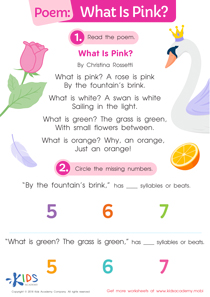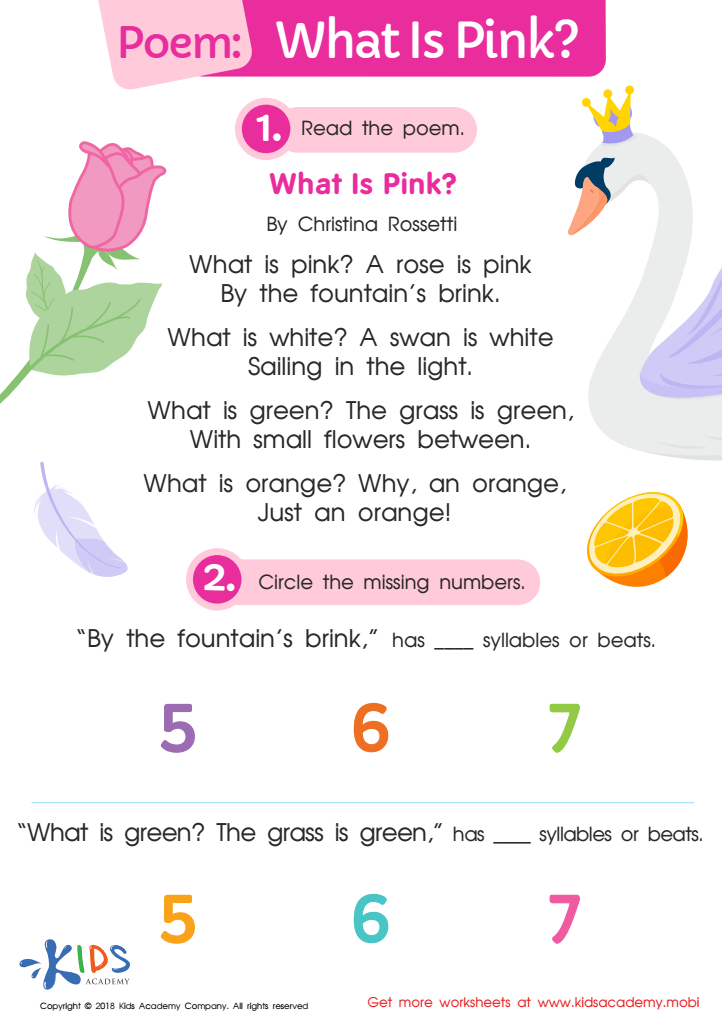Poetry - Lesson for Grade 3, Chapter - Review Across Genres
In this engaging poetry lesson, third grade students will embark on a literary journey through the colorful poem "What Is Pink?" As part of the Reading Literature unit, this lesson focuses on the Review Across Genres chapter, designed to deepen students' understanding and appreciation of different literary forms. Throughout this lesson, students will learn to identify and interpret the vivid imagery and emotional depth that poetry uniquely offers.
The "What Is Pink?" worksheet will serve as an interactive tool, guiding students to explore the poem's thematic elements and linguistic style. Through this activity, learners will develop their analytical skills by dissecting the poem's structure, rhyme scheme, and use of descriptive language. This exercise not only enhances reading comprehension but also encourages creative expression, as students are inspired to recognize the beauty and power of words.
Understanding poetry is crucial for young learners as it fosters empathy, emotional intelligence, and cultural awareness. By exploring different literary genres, students gain a broader perspective on human experiences and emotions, enriching their emotional and intellectual growth. This lesson promises to be a memorable step in cultivating students' lifelong love for literature.

-
Activity 1 / Poem: What Is Pink? Worksheet
With the aid of short, fun and interesting poems, your kids can learn one or two things. Other than just learning how to read better with this short poem, your kid will also learn more about colors. The poem has 8 lines and four short stanzas. Read it aloud together with your child. As you go, take note of the rhyme patterns at the end of each senetsnce. Also, give your kids common examples of objects that have each of the colors described in the poem. Now, help your kids circle the missing numbers to answer each of the two questions given.

